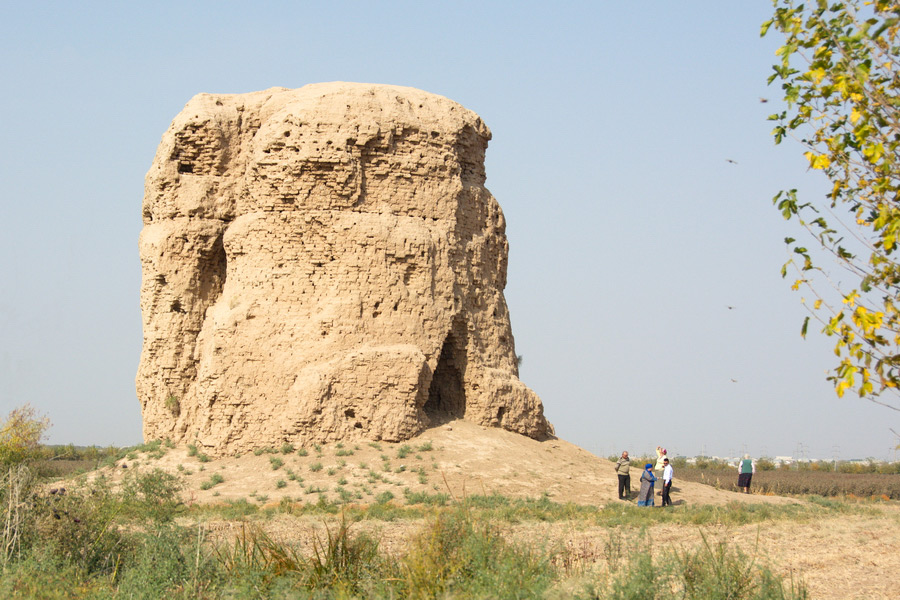Zurmala Stupa, Termez

The Zurmala Stupa is an ancient historical monument located near Termez, dating back nearly two thousand years to the era of the powerful Kushan kingdom in Central Asia. The Kushan rulers were strong proponents of Buddhist culture, constructing temples and monastic centers near major cities to facilitate meditation and religious practices. The Zurmala Stupa functioned as a sacred repository for relics, including sacred texts, statuettes, and fragments of the Buddha's remains. Although partially destroyed, the stupa remains an impressive site due to its imposing size and historical significance, attracting many visitors to Termez.
Architecture and Symbolism
Standing at about 13 meters tall today, the stupa originally may have reached 16–20 meters. It featured a dome topped with a spire, a design characteristic of Buddhist architecture. Built from square raw bricks measuring 33 centimeters each, constructing this monumental structure required approximately one million clay blocks.
The rounded base of the Zurmala Stupa symbolizes the Earth, while its once-towering spire represented a connection to the cosmos. At its peak was an umbrella-shaped structure that held sacred relics. In Buddhist tradition, this umbrella symbolizes good fortune, spiritual protection, and the overcoming of earthly suffering, serving as a canopy shielding the faithful from life's challenges.
Spiritual Legacy
Despite its weathered state, the Zurmala Stupa continues to convey profound symbolic meaning. Its form reflects the cycle of life, spiritual rebirth, and the pursuit of enlightenment. The harmonious blend of its earthly and celestial elements serves as a powerful reminder of the unity between the material and spiritual worlds.
The Zurmala Stupa remains a must-see destination for those exploring Termez, offering visitors a glimpse into the region’s rich Buddhist heritage and its timeless architectural achievements.

